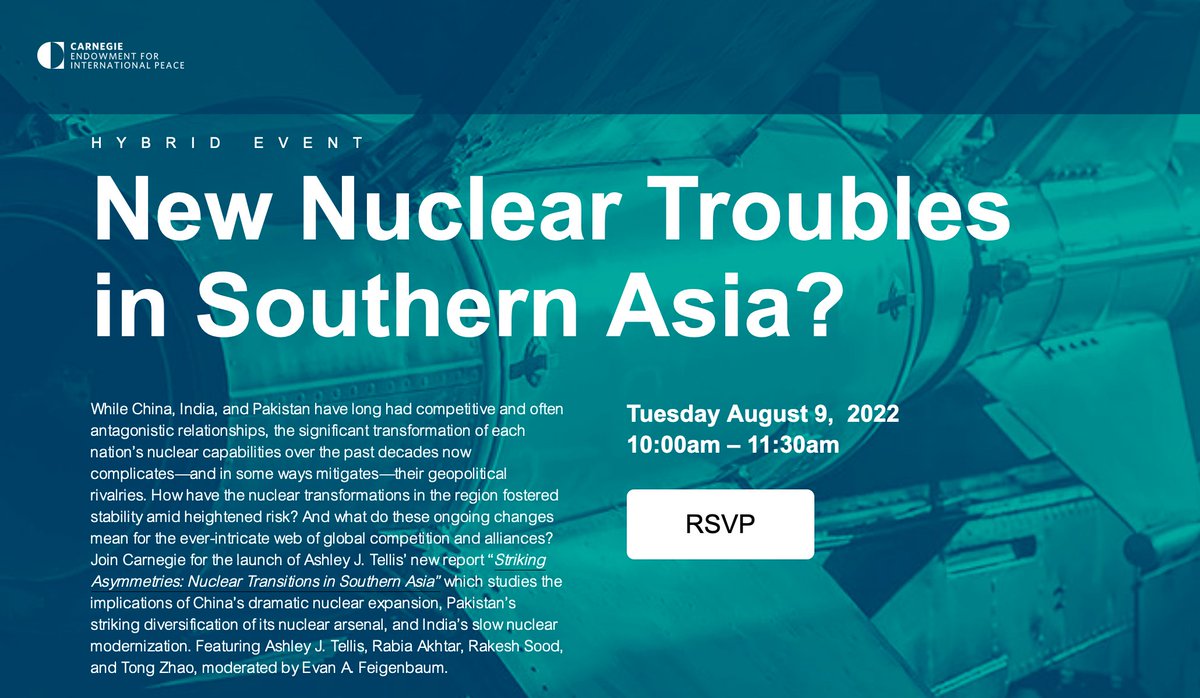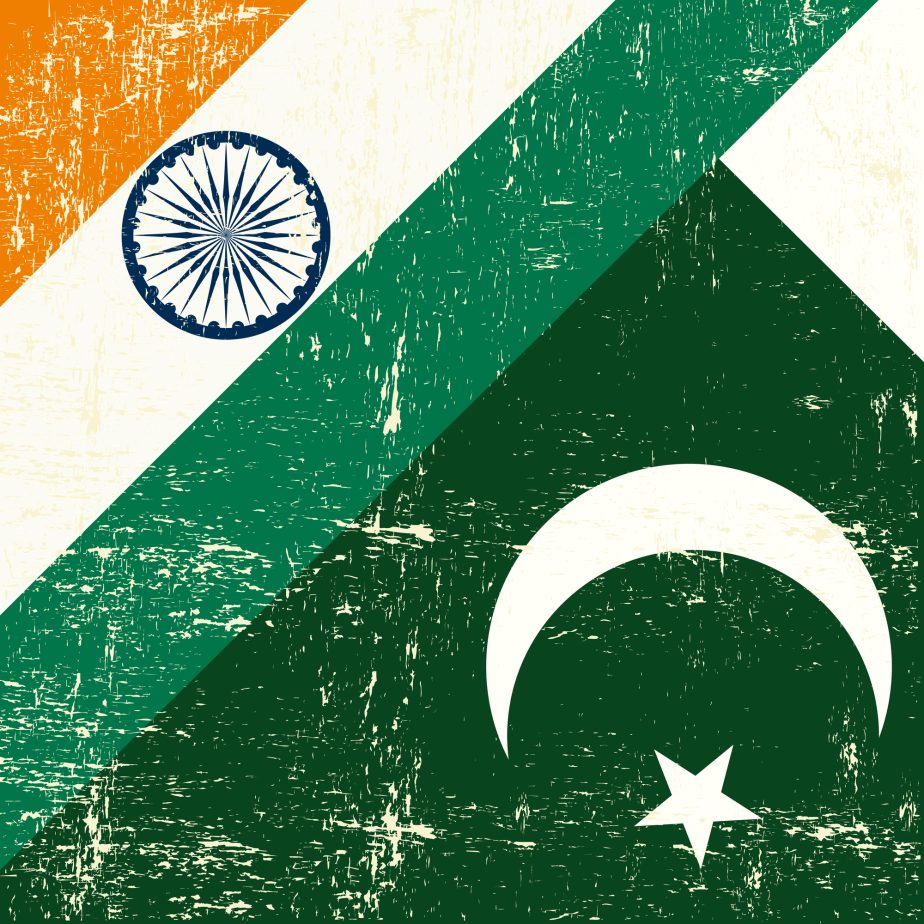Book Review | ‘Striking Asymmetries: Nuclear Transitions in Southern Asia’
FINANCIAL EXPRESS
APLN member C Uday Bhaskar reviews “Striking Asymmetries: Nuclear Transitions in Southern Asia” by Ashley J. Tellis, the Tata Chair for Strategic Affairs and a senior fellow at the Carnegie Endowment for International Peace. Read the original article here.
In the run-up to the 25th anniversary of the May 1998 nuclear tests that saw India and Pakistan emerging as states capable of nuclear weapons, Striking Asymmetries is a valuable and timely contribution to the existing literature on the southern Asian nuclear conundrum.
It has been modestly described by its author, Ashley J Tellis, an accomplished analyst and senior policy adviser to the US government, as a ‘report’ that has been “over two decades in the making”. However, given its comprehensive content and the insightful analysis in relation to the nuclear trajectories of China, India and Pakistan and with 931 endnotes to boot, it qualifies to be introduced as a significant book by itself, even though the lack of an index might compel a purist to view this as a major monograph.
Be that as it may, Tellis is to be commended for this comprehensive and lucid account of the Asian nuclear triangle comprising China, India and Pakistan and for framing this as the nuclearisation of ‘southern Asia’—which is the more valid strategic construct, as some Indian analysts have long argued.
Neatly divided into four chapters of almost equal length, the first three include China, India, Pakistan and their journey down the nuclear path. The last chapter weaves these transitions in southern Asia and offers a persuasive interpretation of the prevailing strategic stability in the region, and the challenges ahead.
China carried out its first nuclear test in October 1964, albeit with Soviet assistance and in the next decade, the 1970s, Pakistan resolved to acquire nuclear weapons after the erstwhile East Pakistan became independent Bangladesh in December 1971. The fact that Pakistan was enabled in its furtive nuclear quest both by China and the USA in different ways adds to the distinctive WMD (weapons of mass destruction) texture of southern Asia.
China made a critical decision in the 1980s to assist Pakistan in its acquisition of WMDs and Tellis refers to this as: “Through a combination of internal efforts, stolen technology from abroad (thanks to AQ Khan), and the extraordinary Chinese transfer of nuclear weapons designs, technology and weapons-grade fissile materials, Pakistan had acquired an embryonic nuclear weapons capability by 1987.”
Pakistan with PM Zulfiqar Ali Bhutto at the helm exuded unbridled enthusiasm and secret resolve to acquire nuclear weapons (even if it meant ‘eating grass’) and in contrast India was the more reticent and hesitant nation. While it carried out a nuclear test in May 1974—it was described as a PNE (peaceful nuclear explosion)—and New Delhi assured its principal interlocutors that it was not going down the nuclear weapon path.
The individual chapters in the volume provide rich detail about the manner in which each of the three nations —China, India and Pakistan—progressively enhanced its nuclear arsenal and the Tellis conclusion is important. “After China, Pakistan will likely possess the largest and most diversified nuclear capabilities in Southern Asia because its program is increasingly driven less by what India is actually doing and more by its fervid imaginings of Indian capabilities.”
In the immediate aftermath of the May 1998 nuclear tests by India and Pakistan, the US went ballistic since the two south Asian neighbours, who chose to remain outside the NPT (nuclear non-proliferation treaty), had effectively revealed the limitations of an inherently iniquitous protocol. In the year that followed, 1999, the nascent nuclear powers India and Pakistan engaged in a limited war in Kargil and then US president Bill Clinton gravely noted that “the most dangerous place in the world today, I think you could argue, is the Indian subcontinent”.
However, despite the anxiety occasioned by Pakistan taking recourse to nuclear sabre-rattling (use of tactical nuclear weapons to blunt any Indian attack), southern Asia has been relatively stable along the two dyads, China-India and India-Pakistan. After a detailed account of 200-plus pages that dwell on the respective arsenals, delivery systems, kill ratios and more, Tellis concludes: “The perception of nuclear weapons as essentially political instruments in all three Southern Asian states thus produces a measure of strategic stability that is more robust than their expanding arsenals would suggest.”
Lest it be assumed that the next 25 years will be as stable, Tellis introduces a note of caution by highlighting specific ‘uncertainties’ that could “become significant in the years ahead and should be watched carefully by US policymakers.” These include defence-driven damage-limiting capabilities and strategies such as missile defence programmes; offence-driven hard-target counterforce kill capability; and the possibility that one or more of the southern Asian states would acquire significant technical capability to “procure asymmetric intelligence transparency vis-a-vis its rivals.”
Global nuclear stability is currently in an animated state given the turbulence triggered by developments in eastern Europe and Russian President Putin’s veiled threat to use his nation’s considerable WMD capability. Hence how the war in Ukraine unfolds with this nuclear overhang or reaches some kind of uneasy closure will be critical. China, which is now the principal geopolitical challenger to the USA, is evolving its own nuclear strategy and whether this will be similar to the menacing US-Soviet contest of the Cold War decades is moot. But Beijing’s nuclear aspirations will have a complex but definitive impact on the strategic stability of southern Asia and for India in particular.
Tellis makes a brief but thought-provoking observation in relation to the conservative manner in which southern Asian political leaders approach nuclear weapons and the contrast with the more refined and esoteric perspectives of professional analysts who focus on the war-fighting options of the apocalyptic weapon. Given that Pakistan is the only nuclear weapon capable nation where the military has its ‘finger on the button’ —the institutional conservatism of the men in khaki in Rawalpindi could have been elucidated.
In the final analysis, whether nuclear reticence and rectitude will be an abiding tenet for the global political leadership or Nagasaki will be followed by another dreadful mushroom cloud exigency, with apocalyptic consequences alas, remains indeterminate.




